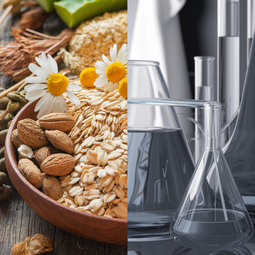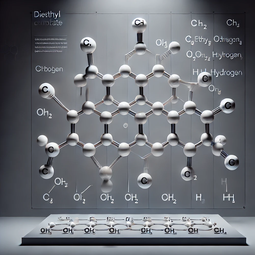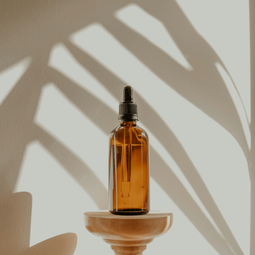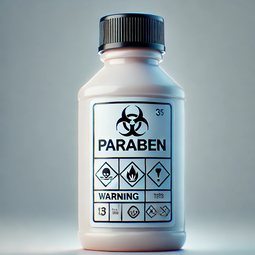Photosensitive Ingredients in Skincare: What They Are, Why They’re Used, and How to Use Them Safely
By:
bryan choong
On
16/11/2024Reading time:
0 min
Summary:
Skincare formulations often include active ingredients designed to target specific concerns, such as acne, hyperpigmentation, or aging. Some of these ingredients, however, come with an important caution: they can make the skin more photosensitive, increasing susceptibility to sunburn and pigmentation when exposed to sunlight. Understanding what photosensitivity is, which ingredients are involved, and how to use them safely can help you reap the benefits of these powerful ingredients without compromising skin health.

What is Photosensitivity?
Photosensitivity occurs when certain ingredients make the skin more reactive to ultraviolet (UV) radiation from the sun. This reaction can lead to sunburn, irritation, and increased risk of pigmentation. In skincare, photosensitive ingredients are often used for their exfoliating, brightening, or anti-aging properties but can cause skin issues if exposed to sunlight shortly after application (Prasad et al., 2004).
Common Photosensitive Ingredients in Skincare
Several active ingredients in skincare are known to be photosensitive. Here’s a breakdown of some of the most common ones:
Alpha Hydroxy Acids (AHAs): AHAs, including glycolic acid and lactic acid, are chemical exfoliants that improve skin texture and brightness by removing dead skin cells. However, they make the skin more susceptible to sunburn and UV damage (Smith et al., 2001).
Beta Hydroxy Acids (BHAs): The most common BHA, salicylic acid, is frequently used in acne treatments. While less photosensitizing than AHAs, BHAs can still make the skin more sensitive to sunlight.
Retinoids: Retinoids, including retinol, retinoic acid, and retinaldehyde, are potent anti-aging ingredients that promote cell turnover. They make the skin more vulnerable to UV rays, which can lead to sunburn or hyperpigmentation if not paired with sunscreen (Mukherjee et al., 2006).
Vitamin C: Vitamin C, or ascorbic acid, is an antioxidant often used to brighten the skin and reduce pigmentation. While it’s not inherently photosensitive, it can degrade in sunlight, reducing its effectiveness. It’s often recommended to use vitamin C in the morning with a sunscreen to protect both the skin and the stability of the product.
Essential Oils: Some essential oils, especially those derived from citrus fruits like lemon, orange, lime, and grapefruit, contain compounds that can cause phototoxic reactions. When applied to the skin and exposed to sunlight, these oils can lead to redness, blistering, and pigmentation (Bourgeois et al., 2017).
Benzoyl Peroxide: Common in acne treatments, benzoyl peroxide can make the skin dry and more sensitive to the sun, increasing the risk of irritation.
The Benefits of Photosensitive Ingredients
Photosensitive ingredients are commonly used in skincare because they are effective in treating a range of concerns:
Exfoliation and Texture Improvement: AHAs and BHAs exfoliate dead skin cells, improve texture, and help smooth fine lines.
Anti-Aging: Retinoids are well-known for their ability to boost collagen production and reduce signs of aging.
Brightening and Hyperpigmentation: Ingredients like vitamin C and AHAs target hyperpigmentation, helping to brighten the skin and create a more even tone.
Acne Treatment: BHAs and benzoyl peroxide penetrate pores to reduce acne-causing bacteria, making them effective for oily or acne-prone skin.
The Risks of Using Photosensitive Ingredients
Despite their benefits, photosensitive ingredients carry certain risks if not used with caution:
Sunburn and Skin Damage: Photosensitive ingredients make the skin more vulnerable to UV damage, leading to sunburn, irritation, and potentially long-term effects like premature aging.
Hyperpigmentation: For those with darker skin tones, the risk of hyperpigmentation increases when photosensitive ingredients are used without adequate sun protection.
Irritation and Redness: Sun exposure while using these ingredients can lead to inflammation and irritation, reducing the effectiveness of the treatment and causing discomfort.
How to Safely Use Photosensitive Ingredients
Using photosensitive ingredients can be safe and effective with the right precautions. Here are some tips to minimize risks:
Use at Night: Applying photosensitive ingredients at night is often recommended. Ingredients like retinoids, AHAs, and BHAs can work effectively while you sleep, with minimal risk of sun exposure.
Always Apply Sunscreen: Sunscreen is essential when using photosensitive ingredients, even if they’re applied at night. During the day, wear a broad-spectrum SPF 30 or higher to protect your skin from UV damage (Green et al., 2011).
Introduce Gradually: Start by using photosensitive ingredients once or twice a week, then gradually increase the frequency as your skin builds tolerance. This can help reduce the risk of irritation and sun sensitivity.
Pair with Soothing Ingredients: To reduce the risk of irritation, pair photosensitive ingredients with soothing and hydrating components, such as hyaluronic acid, niacinamide, or aloe vera, which can help calm the skin.
Avoid Combining Multiple Photosensitive Ingredients: Using several photosensitive ingredients simultaneously can increase the risk of sun damage. For example, combining AHAs and retinoids may lead to excessive irritation. Instead, alternate days or use them on separate occasions.
Conclusion: Are Photosensitive Ingredients Right for You?
Photosensitive ingredients are powerful tools in skincare that can offer significant benefits for treating acne, hyperpigmentation, and signs of aging. However, they come with specific risks that require careful management. By following best practices—such as applying these ingredients at night, using sunscreen, and gradually introducing them into your routine—you can safely incorporate photosensitive ingredients into your skincare regimen.
Remember, skincare is not one-size-fits-all. If you’re considering using products with photosensitive ingredients, assess your skin type, tolerance, and lifestyle. Consulting with a dermatologist can help you make informed choices and maximize the benefits of these powerful ingredients while minimizing the risks.
References
Bourgeois, C., Levesque, M., & Guiot, M. (2017). Essential oils and their phototoxicity: Risks and guidelines. Journal of Photochemistry and Photobiology B: Biology, 176, 92-100.
Green, A. C., Williams, G. M., Logan, V., & Strutton, G. M. (2011). Reduced melanoma after regular sunscreen use: Randomized trial follow-up. Journal of Clinical Oncology, 29(3), 257-263.
Mukherjee, S., Date, A., Patravale, V., Korting, H. C., Roeder, A., & Weindl, G. (2006). Retinoids in the treatment of skin aging: An overview of clinical efficacy and safety. Clinical Interventions in Aging, 1(4), 327-348.
Prasad, D., Arora, S., & Nair, R. (2004). The role of alpha hydroxy acids in skincare. Indian Journal of Dermatology, 49(3), 143-150.
Smith, W. P., Wu, M., & Du, Y. (2001). The effects of alpha-hydroxy acids on the stratum corneum. Journal of Cosmetic Science, 52(1), 23-30.

Natural vs. Synthetic Skincare: What’s the Difference, and Which Is Right for You?
Author name
13.11.2024

Phthalates in Skincare: What They Are, Why They’re Used, and Why They’re Controversial
bryan choong
12.11.2024

Synthetic Fragrance vs. Essential Oils: Which Is Better for Your Skincare?
Author name
13.11.2024

What Are Parabens, and Why Are They Used in Skincare?
bryan choong
12.11.2024